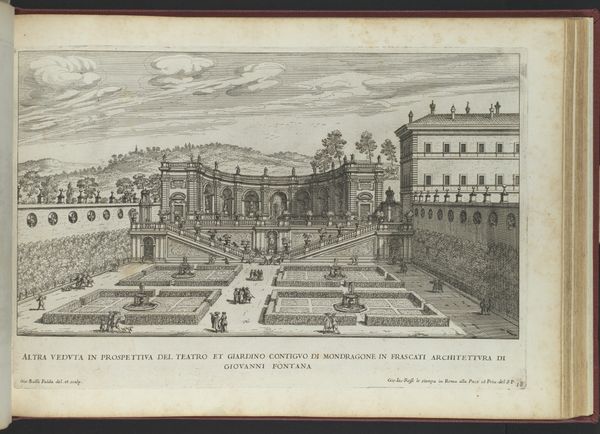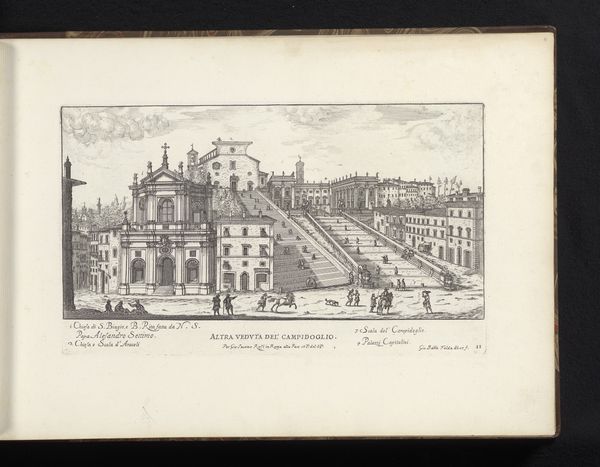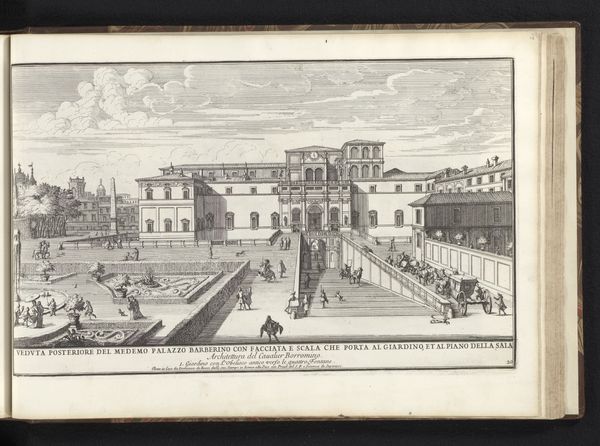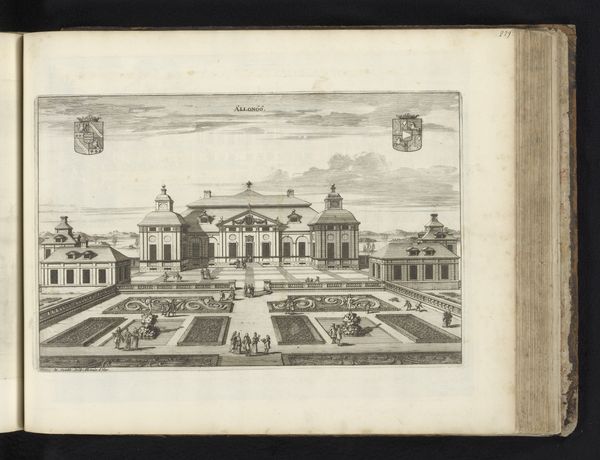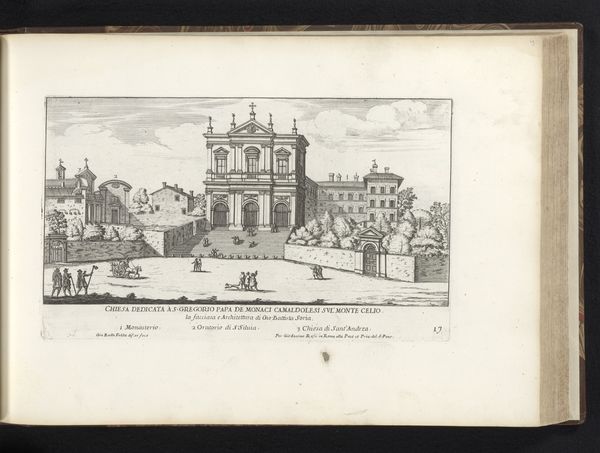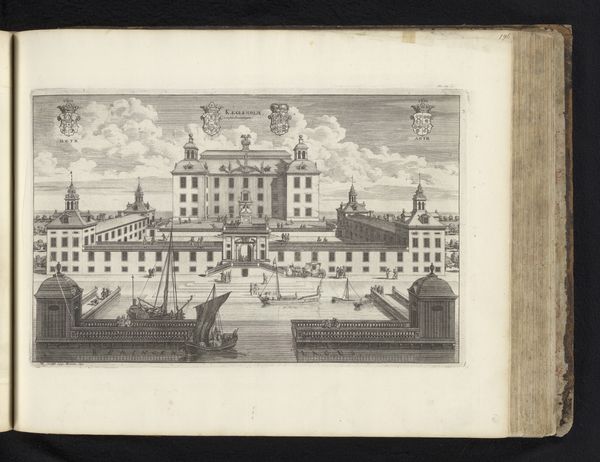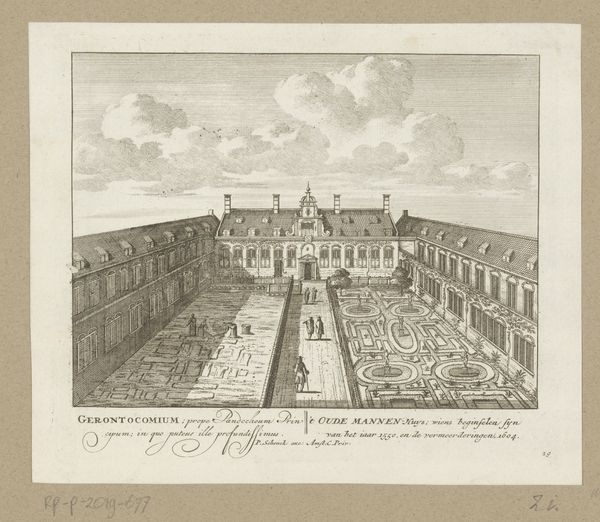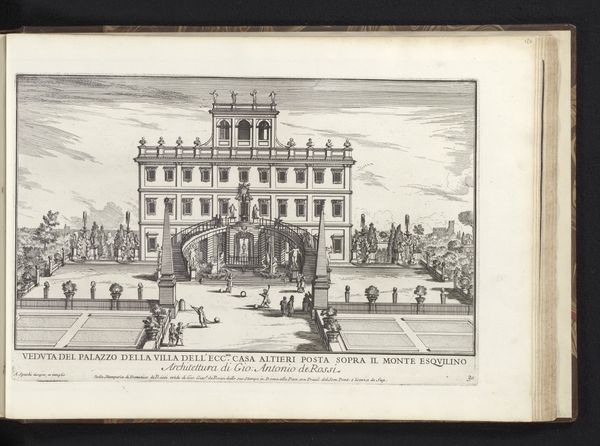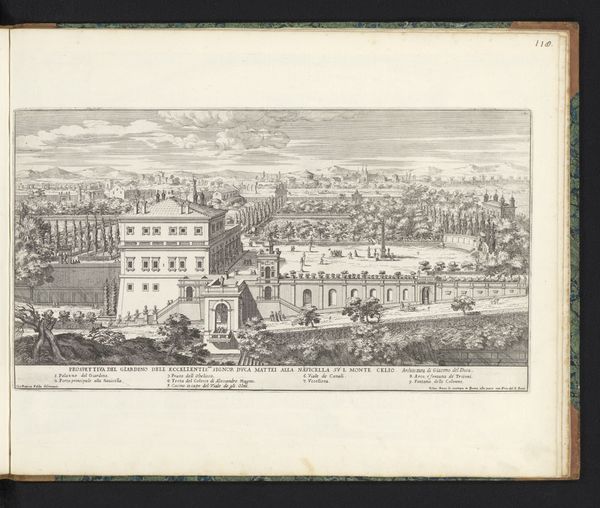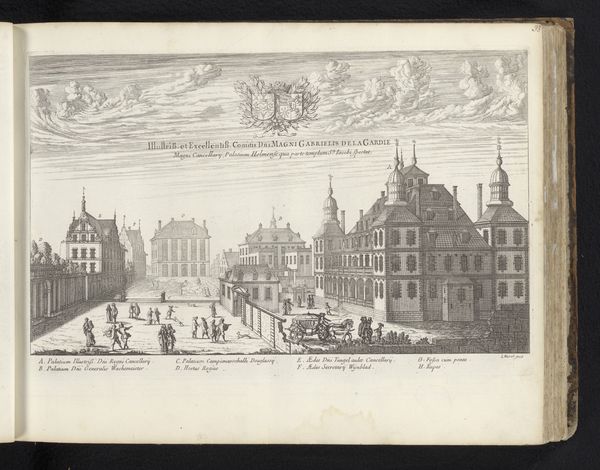
drawing, print, engraving
#
drawing
#
baroque
# print
#
cityscape
#
italian-renaissance
#
engraving
Dimensions: height 172 mm, width 292 mm
Copyright: Rijks Museum: Open Domain
Editor: This is Giovanni Battista Falda's "Capitool te Rome," created in 1665. It’s a print, an engraving actually, depicting a cityscape and currently residing at the Rijksmuseum. I'm struck by how meticulously the artist rendered the architectural details and by the almost mathematical precision of the perspective. What do you notice when you examine this print? Curator: I am drawn to the interplay of lines and the arrangement of forms within the pictorial space. Notice how Falda uses linear perspective not merely to create depth but also to establish a hierarchical structure. The Capitol building is not just centered, but it's elevated, monumentalized, by the converging orthogonals. Do you observe how the lines create a sense of order and stability, reflecting Baroque ideals? Editor: Yes, I see that now. It’s as if the architecture itself becomes the subject. The figures are relatively small, aren’t they? Almost like afterthoughts. Curator: Precisely. Falda’s focus is on the formal articulation of space and architectural mass. The figures serve as a scale reference, but they are subsumed within the larger architectural order. Consider the modulation of light and shadow—how does Falda use it to define volume and texture? Editor: The shadows definitely add depth, making the buildings look more three-dimensional. It seems almost like a stage set. Curator: Indeed. One could argue that Falda is constructing an idealized vision of urban space, where order and harmony prevail. Do you see the geometrical structure implicit in the composition? Editor: Yes, I see the implied triangles and rectangles within the architecture. I didn't catch all the visual relationships at first! Curator: Exactly! It is through close attention to the structural underpinnings that we truly come to see how an artist like Falda creates not just a representation, but a constructed reality. Editor: I see. It really encourages a different appreciation of how an image can be viewed when you strip away the cultural elements, which in return strengthens our observation of the construction. Thanks!
Comments
No comments
Be the first to comment and join the conversation on the ultimate creative platform.
